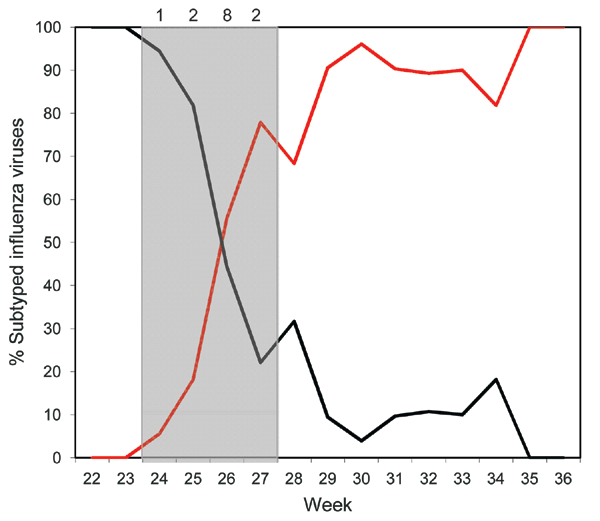Volume 16, Number 10—October 2010
Dispatch
Pandemic (H1N1) 2009 and Seasonal Influenza A (H1N1) Co-infection, New Zealand, 2009
Figure

Figure. Co-infection during cocirculation of seasonal influenza A (H1N1) and pandemic (H1N1) 2009 viruses, New Zealand, 2009. Red line indicates pandemic (H1N1) 2009 viruses; black line indicates seasonal influenza A (H1N1) viruses. The gray shaded area indicates weeks in which the co-infections occurred; numbers above the graph indicate number of co-infections for that week: 1 co-infection in week 24, 2 in week 25, 8 in week 26, and 2 in week 27.
Page created: September 07, 2011
Page updated: September 07, 2011
Page reviewed: September 07, 2011
The conclusions, findings, and opinions expressed by authors contributing to this journal do not necessarily reflect the official position of the U.S. Department of Health and Human Services, the Public Health Service, the Centers for Disease Control and Prevention, or the authors' affiliated institutions. Use of trade names is for identification only and does not imply endorsement by any of the groups named above.